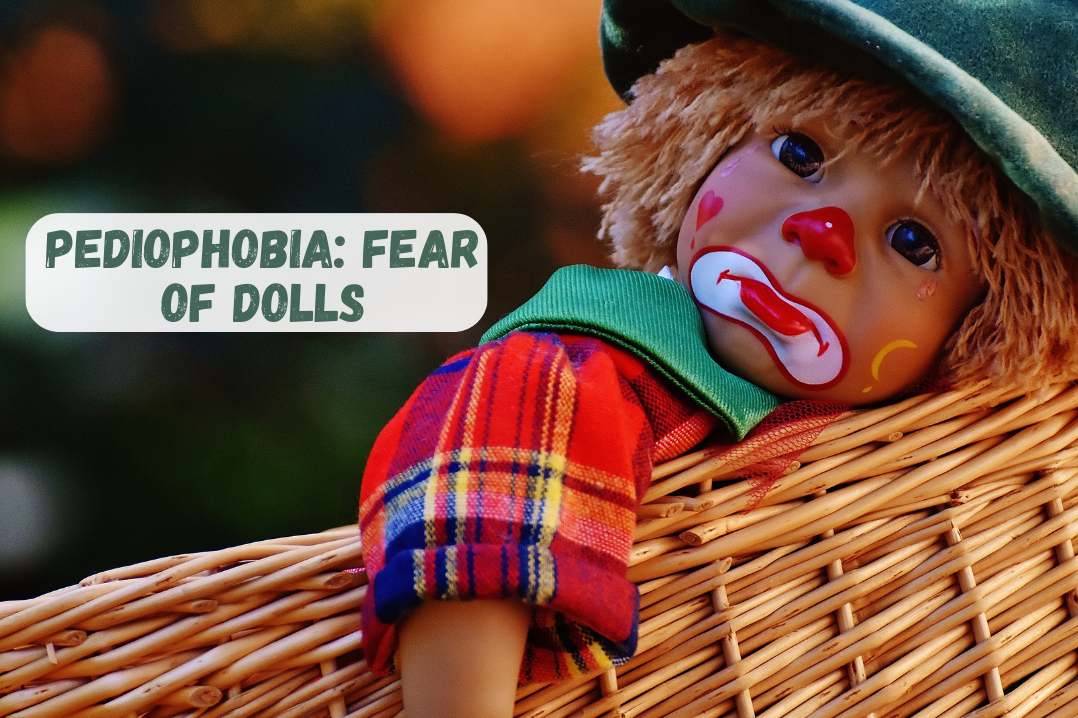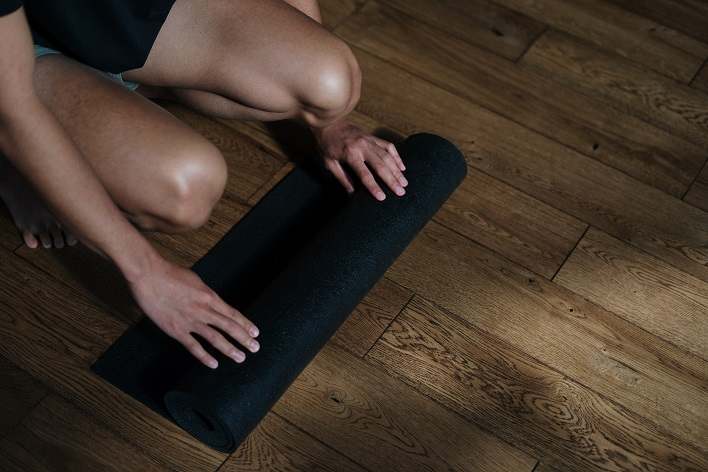
Pediophobia, the irrational fear of dolls, can be a challenging and distressing condition for those who suffer from it. Individuals with this phobia may experience significant difficulty even thinking about dolls, let alone being in their presence. In some cases, their fear can become so intense that it leads to panic attacks, which may require hospitalization, although such extreme instances are relatively rare.
Over the years, horror films have capitalized on the eerie and unsettling appearance of many dolls. This is particularly evident in popular horror franchises like “Child’s Play,” featuring the murderous doll Chucky, and numerous other movies centered around possessed dolls going on killing sprees. As a result, pediophobia has found a place in mainstream entertainment due to its ability to evoke fear and intrigue.
Pediophobia is actually relatively common among phobias, comparable in prevalence to other fears like aerophobia (fear of flying), cynophobia (fear of dogs), and achluphobia (fear of the dark). While this phobia may be more prevalent in children, it can affect adults as well.
Depending on the severity of an individual’s pediophobia, it’s possible for them to develop additional psychological disorders as a result of their intense fear of dolls. For example, it’s not unreasonable to consider that someone with an irrational fear of dolls may eventually develop conditions such as obsessive-compulsive disorder (OCD) or generalized anxiety disorder (GAD), among other potential disorders.
Symptoms
Pediophobia, the fear of dolls, can manifest with a range of symptoms, which can vary in intensity from person to person. Some common symptoms of pediophobia include:
- Anxiety and Panic: Individuals with pediophobia often experience heightened anxiety when they encounter dolls or even think about them. This anxiety can escalate into panic attacks, characterized by rapid heartbeat, shortness of breath, sweating, and an overwhelming sense of fear.
- Avoidance Behavior: People with pediophobia typically go to great lengths to avoid situations or places where they might come into contact with dolls. They may refuse to enter rooms with dolls or even avoid places where dolls are commonly found, such as toy stores.
- Physical Symptoms: Anxiety related to pediophobia can lead to physical symptoms like trembling, nausea, muscle tension, and headaches. These symptoms can be triggered by the mere presence of dolls or the anticipation of encountering them.
- Intrusive Thoughts: Sufferers may experience intrusive and distressing thoughts about dolls, even when they are not present. These thoughts can be difficult to control and may contribute to their anxiety.
- Hyper-Vigilance: People with pediophobia may be hyper-vigilant, constantly on the lookout for dolls in their surroundings. This heightened awareness can add to their stress and anxiety.
- Nightmares: Pediophobia can lead to recurring nightmares or distressing dreams featuring dolls. These nightmares can further contribute to sleep disturbances and anxiety.
- Social Isolation: Individuals with pediophobia may withdraw from social activities and relationships that involve dolls, as they are unable to cope with their fear in social situations.
- Negative Impact on Daily Life: The fear of dolls can significantly interfere with a person’s daily life, making it challenging to function normally in both personal and professional settings.
- Hyperventilation: Some individuals may hyperventilate when exposed to dolls, leading to a feeling of dizziness, lightheadedness, and an increased heart rate.
Causes

The exact cause of pediophobia is not known, but it is likely influenced by a combination of genetic and environmental factors. Genetics may play a role in the development of this phobia, especially if an individual has a family history of mental illness. However, having a genetic predisposition to mental illness does not guarantee that someone will develop pediophobia.
Environmental factors can also contribute to the development of pediophobia. For example, a person may have a genetic predisposition to mental illness but may only develop pediophobia after experiencing a traumatic event, such as being frightened by a horror film featuring an evil doll during childhood. Additionally, someone might develop pediophobia simply based on their perception of dolls as creepy, especially if they have a genetic predisposition to this phobia.
If an individual is already dealing with an anxiety disorder like OCD or GAD, their existing anxieties can be channeled toward dolls, potentially leading to the development of pediophobia. For instance, a person with GAD who is generally anxious may be more prone to develop pediophobia if they experience a traumatic event involving dolls.
Treatments:
Dialectical Behavior Therapy (DBT) for Pediophobia:
DBT is a highly effective treatment approach for individuals sanxiety disorders truggling with regulating their emotions. While it is frequently employed to assist those with borderline personality disorder, it can also offer significant benefits to individuals dealing with anxiety disorders like pediophobia. This is primarily because DBT provides a wealth of coping skills that can be invaluable in managing anxiety. Typically conducted in group settings, DBT programs often span approximately six months and can accommodate a varying number of participants, depending on group size.
One particularly valuable DBT skill for individuals with pediophobia is the practice of “half-smiling.” This technique involves thinking about the feared or distressing object or situation while gently lifting the corners of the mouth into a slight smile, hence the term “half-smiling.” However, it’s essential not just to contemplate the fear while half-smiling but also to resist getting caught up in the distressing emotions that the specific fear may trigger.
Mindfulness meditation is another prominent component of DBT and can greatly benefit those with pediophobia. Group mindfulness sessions, often involving activities such as savoring the taste and tactile sensations of warm tea or focusing on one’s breath, can help individuals step out of their comfort zones and develop mindfulness skills.
“Coping ahead” is yet another valuable DBT skill that can aid individuals with pediophobia. To practice coping ahead, find a quiet, distraction-free space, close your eyes, and envision various possible scenarios in which you confront and effectively cope with your specific fear. This mental exercise enhances your preparedness for managing pediophobia when you encounter the fear in real-life situations.
Yoga for Pediophobia:

Yoga offers numerous poses and practices that can be highly beneficial for individuals dealing with pediophobia. This is partly because of the meditative and calming aspects of yoga, which can redirect attention and help alleviate anxiety associated with this phobia. Yoga is often described as a form of “meditation in motion” and can serve as a constructive distraction from distressing thoughts and fears.
Various types of yoga are available, and individuals with pediophobia can choose the style that suits them best, such as hatha yoga, hot yoga, or others. Regardless of the specific yoga form, the practice can help reduce stress and anxiety associated with pediophobia.
If you’re new to yoga, it might be a good idea to attend a class or follow guided videos to learn the poses and techniques. Similar to meditation, regular practice of yoga can improve your proficiency over time. In addition to alleviating symptoms of pediophobia, you can also expect to gain increased strength, flexibility, and various other physical and mental benefits through regular yoga practice.
Cognitive Behavioral Therapy (CBT) for Pediophobia:
CBT is a psychotherapeutic approach designed to enhance an individual’s mental health. While it is commonly employed to treat various anxiety disorders such as generalized anxiety disorder and OCD, individuals with pediophobia can also benefit from CBT. CBT can provide them with a better understanding of the underlying thought patterns and behaviors related to their irrational fears.
CBT can be particularly valuable for individuals with pediophobia due to the automatic and instantaneous nature of their fear responses. When exposed to their fear, those with pediophobia often experience immediate and subconscious reactions. This lack of introspection can contribute significantly to the distress associated with this condition. CBT enables individuals to step back and analyze their fears more deeply than they typically would, helping them gain insight into the root causes and triggers of their anxiety.
In addition to developing a more meticulous understanding of their specific fears, individuals with pediophobia engaging in CBT can expect to acquire various coping skills aimed at alleviating the anxiety associated with their condition. Through CBT, they can learn techniques to challenge irrational thoughts, reframe their beliefs about dolls, and develop strategies for managing their fear more effectively.
Mindfulness-Based Stress Reduction (MBSR) for Pediophobia:
MBSR is an evidence-based 8-week program that provides intensive mindfulness training to individuals dealing with various forms of mental distress, including anxiety, stress, and depression. MBSR may offer significant assistance to those with pediophobia, as mindfulness meditation has demonstrated its effectiveness in helping people manage anxiety. In a structured MBSR program, individuals with pediophobia can expect to acquire a range of skills to alleviate the intense anxiety associated with their specific phobia.
For those interested in exploring MBSR as a potential treatment for pediophobia, it is advisable to consult with a healthcare professional, such as a doctor or therapist, to determine if this approach is suitable for their needs. These professionals can also provide guidance on where to find MBSR programs in their local area.
Exposure Therapy for Pediophobia:
As mentioned earlier, exposure therapy is a common and effective approach for treating anxiety disorders like pediophobia. It can help individuals become desensitized to their specific fears. However, it is crucial that the therapist conducting the therapy is highly skilled and experienced. The level of exposure must be carefully tailored to the individual’s specific needs.
Underexposure may not be effective if it doesn’t challenge the patient sufficiently, while overexposure can be counterproductive, potentially worsening the phobia. Therefore, it’s essential for the therapist to have a thorough understanding of the severity of the patient’s symptoms to determine the appropriate level of exposure.
Reducing Caffeine for Pediophobia:
Caffeine is well-known for its potential to increase anxiety, as it can lead to physiological responses such as an elevated heart rate and increased tension. In essence, it can put the body into a “fight or flight” state, which is often a trigger for panic attacks in individuals with pediophobia.
Reducing or eliminating caffeine consumption throughout the day can significantly help lower day-to-day anxiety. While this may not completely alleviate anxiety, it can certainly reduce unnecessary distress. Caffeine is commonly found in beverages like coffee, tea, and some energy drinks, as well as in certain foods like dark chocolate. Being mindful of your daily caffeine intake can help manage symptoms associated with pediophobia.
Psychiatric Drugs for Pediophobia:

Antidepressant Drugs:
Antidepressant medications are not solely prescribed for individuals with depression; they can also be effective in treating anxiety disorders like pediophobia. Some common antidepressants include Paxil, Zoloft, and Lexapro, among others. These medications have the potential to alleviate symptoms associated with pediophobia.
Antidepressants are typically taken on a daily basis and are often used to manage daily anxiety, which can help prevent panic attacks. It’s essential to consult with a healthcare professional to determine if antidepressants are a suitable option for reducing the symptoms of pediophobia and to ensure their safe and appropriate use.
Anti-anxiety Drugs:
Anti-anxiety medications are valuable for preventing and managing panic attacks, which can be particularly beneficial for individuals dealing with severe pediophobia, as phobia sufferers may also experience panic attacks. Some common anti-anxiety drugs include Xanax, Valium, and Klonopin, among others.
These medications are not typically taken on a daily basis, but in cases of severe pediophobia, a doctor may recommend daily use. However, it’s crucial to have a discussion with a healthcare provider before initiating such treatment to determine its safety and effectiveness for your specific situation.
Exercise for Pediophobia:
Exercise has demonstrated its significant benefits for individuals dealing with anxiety disorders, including pediophobia. In particular, cardiovascular exercise can play a substantial role in reducing stress and anxiety. While weight-resistance training can also offer benefits, aerobic exercise has been shown to be particularly effective in triggering the release of feel-good chemicals in the brain, such as endorphins.
According to the American Psychological Association, exercise can condition the mind to better cope with stressful situations. This is understandable when considering the physical and mental stress that the body undergoes during strenuous exercise. If you lead a sedentary lifestyle, engaging in some form of aerobic exercise can potentially help alleviate your symptoms of pediophobia by enhancing your ability to manage the associated anxiety and stress.
Various aerobic activities are available to help reduce pediophobia symptoms, including swimming, biking, skiing, walking, jogging, and participation in sports like tennis, soccer, basketball, and racquetball, among others. Consistently engaging in exercise can contribute to the gradual relief of distress associated with pediophobia over time.
Meditation for Pediophobia:
Various forms of meditation can be highly beneficial for individuals dealing with pediophobia, with mindfulness meditation being particularly effective in promoting emotional equilibrium. There are diverse approaches to implementing mindfulness meditation, and numerous meditation apps are available to simplify the process.
Mindfulness meditation can offer significant help to those suffering from pediophobia by enabling them to redirect their attention away from their fears and onto something neutral, free from emotional triggers. For instance, focusing on the breath is one of the fundamental ways to practice mindfulness meditation and remain present.
During a panic attack or a distressing episode related to pediophobia, shifting one’s focus to the sensations associated with breathing can help reduce the intensity of anxiety and mental distress.
To integrate mindfulness meditation for symptom relief, you can closely observe how the muscles in your abdomen and chest contract and relax with each breath. Concentrate on the expansion of your chest during inhalation and its contraction during exhalation.
In addition to focusing on the breath, you can direct your attention to the sounds in your environment, the tactile sensations when touching objects, the taste of foods, and the scent of various aromas. Engaging your five senses through mindfulness can effectively lower anxiety associated with pediophobia. It’s important to keep in mind that becoming skilled in meditation takes practice, and consistency is key.
If you suspect you are experiencing symptoms of pediophobia, seeking therapy may be beneficial. Consult with your doctor or a local mental health clinic to explore your available options. Additionally, inquire about potential discounts or promotional offers to assist with treatment costs, and check whether your health insurance covers treatment expenses.
